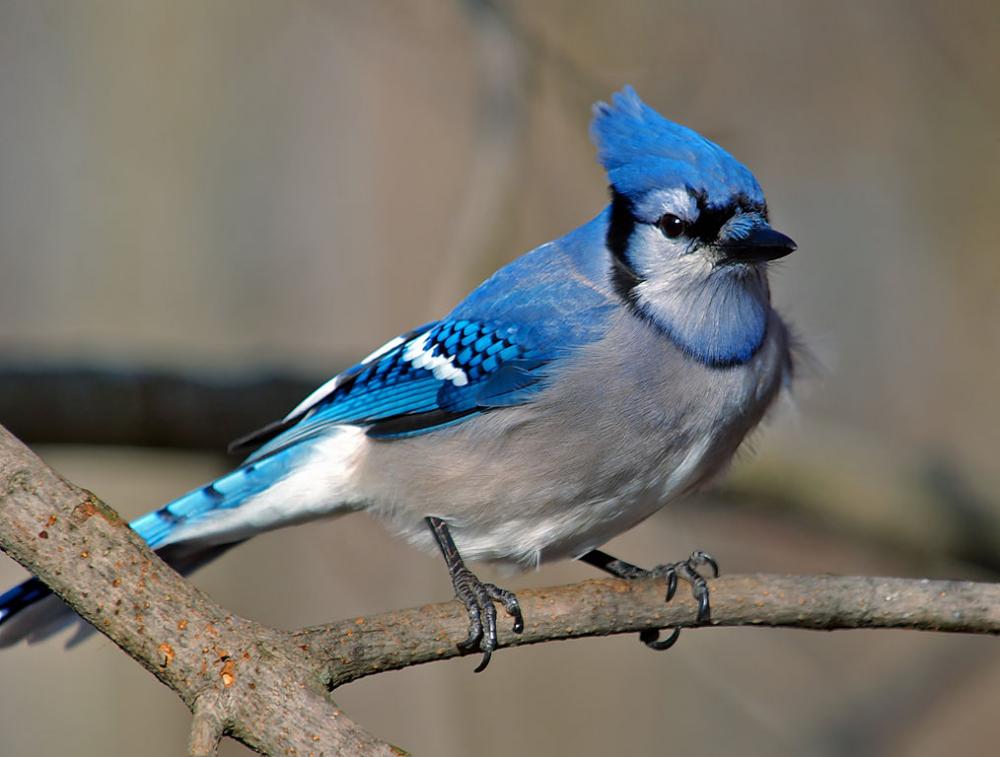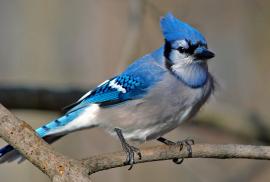Guide to Boreal Birds
Overview
Although sometimes disliked because they chase smaller birds away from feeders, Blue Jays are among the handsomest of birds. They often bury seeds and acorns, and since many are never retrieved they are, in effect, tree planters. They regularly mob predators, and their raucous screaming makes it easy to locate a hawk or a roosting owl. Although seen all year, they are migratory and travel in large loose flocks in spring and fall. Birds from farther north replace local populations in winter. The Blue Jay is also the official bird of Prince Edward Island.
Description
12" (30 cm). Bright blue above with much white and black in the wings and tail; dingy white below; black facial markings; prominent crest.
Voice
A raucous jay-jay, harsh cries, and a rich variety of other calls. One is almost identical to the scream of the Red-shouldered Hawk. Also a musical queedle-queedle.
Nesting
4-6 brown-spotted greenish eggs in a coarsely built nest of sticks, lined with grass and well concealed in a crotch or forked branch of a tree, often a conifer.
Habitat
Chiefly oak forest, but now also city parks and suburban yards, especially where oak trees predominate.
Range/Migration
Resident east of Rockies, from southern Canada to Gulf of Mexico. Slowly encroaching westward.



